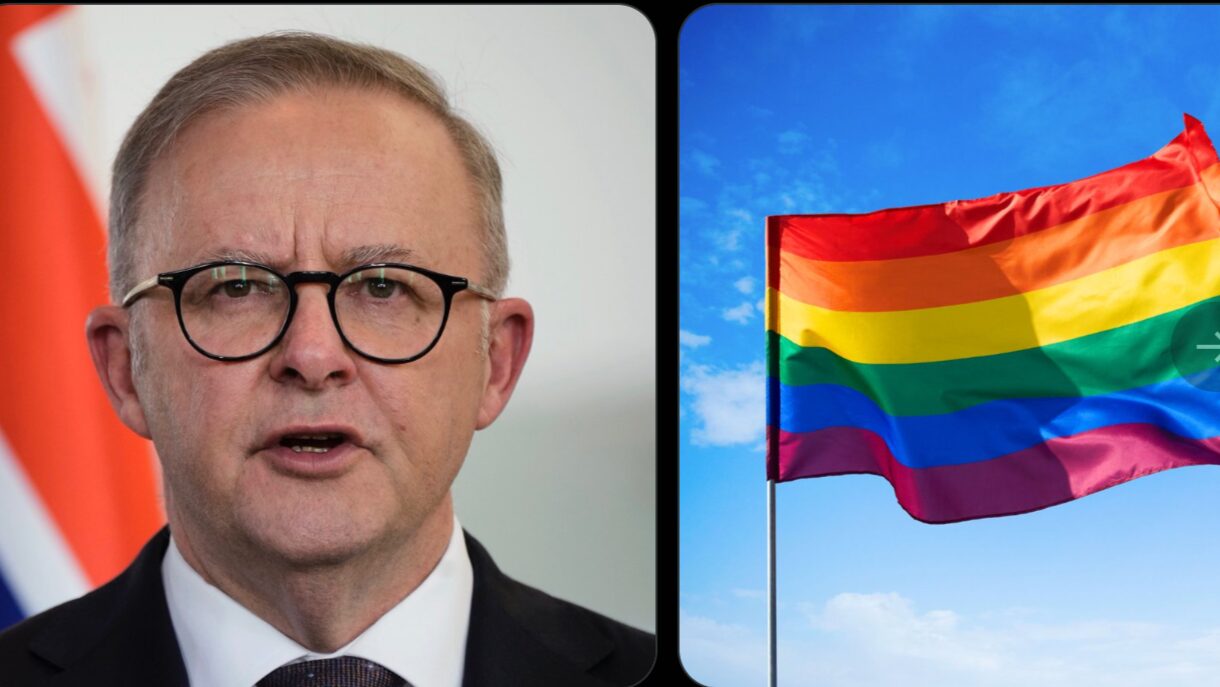Nearly 10% of Australians 16-24 identify as “gay” or “transgender.”
Nearly 10% of Australians Aged 16-24 Identify as ‘Gay’ or ‘Transgender’
Recent statistics from a landmark survey in Australia have revealed that nearly 10% of Australians aged 16-24 now identify as either “gay” or “transgender.” This data marks a significant shift in societal attitudes towards sexuality and gender identity, reflecting a growing trend of acceptance and self-expression among the younger generation. As the conversation around LGBTQ+ rights continues to evolve globally, these findings offer a snapshot of the changing landscape of sexual orientation and gender identity in Australia.
Changing Trends in Sexual Orientation and Gender Identity
The data comes from the Australian Bureau of Statistics (ABS) and represents a growing movement towards openness about sexual orientation and gender identity. In recent years, surveys have consistently shown an increase in the number of young people identifying as part of the LGBTQ+ community. For the first time, this group—comprising both gay, lesbian, bisexual, and transgender individuals—has reached a notable proportion of the population, particularly among younger Australians.
The figures are part of a broader global trend in which younger generations are embracing more fluid identities that challenge traditional definitions of sexuality and gender. The younger cohort, often more progressive in their attitudes towards LGBTQ+ issues, is helping to normalize discussions around sexual orientation and gender identity, creating a more inclusive and diverse social environment.
This surge in self-identification is often attributed to several factors, including increased awareness and visibility of LGBTQ+ issues, better representation in media, and changing societal attitudes. More young people feel empowered to express their true selves, as cultural shifts are creating safer spaces for them to do so.
A Generational Shift: Understanding the Impact
The 10% statistic among young Australians is a reflection of a broader generational shift in how young people view identity. Compared to older generations, who were often constrained by more conservative norms regarding sexuality and gender, today’s youth are more likely to question traditional labels and explore a range of gender identities and sexual orientations.
There are many factors driving this generational change. First, the influence of social media and the internet cannot be underestimated. Platforms like Instagram, TikTok, and YouTube have allowed young people to access communities and information about LGBTQ+ issues, leading to greater self-awareness and validation of diverse identities. The global visibility of LGBTQ+ role models and activists, along with an increase in LGBTQ+ characters in popular TV shows, films, and advertisements, has contributed to an environment in which expressing one’s gender identity or sexual orientation is more accepted.
Another factor is the increase in the availability of resources that offer support to LGBTQ+ individuals, from counseling services to online forums. These resources are especially important in helping young people navigate their identities, particularly in rural or conservative areas where LGBTQ+ issues might still be taboo. This sense of belonging and support has undoubtedly played a role in young Australians feeling more comfortable being open about their sexual orientation or gender identity.
Changing Legal and Social Landscape
The growing acceptance of LGBTQ+ individuals is also reflected in Australia’s legal and social landscape. Over the past few decades, there has been significant progress in LGBTQ+ rights, culminating in the legalization of same-sex marriage in 2017. This was a landmark moment in Australian history, with a majority of Australians voting in favor of legalizing marriage equality. Since then, the legal recognition and rights of LGBTQ+ people have continued to improve.
However, while progress has been made in the legal sphere, challenges remain. Young LGBTQ+ individuals, while more accepted by society than in previous generations, still face discrimination and stigma. Mental health issues, including higher rates of depression, anxiety, and suicide among LGBTQ+ youth, remain pressing concerns. According to the Australian Institute of Health and Welfare, LGBTQ+ young people are at a significantly higher risk of mental health challenges compared to their heterosexual peers, often due to a lack of acceptance from family, peers, or society at large.
To combat these issues, Australian schools and universities have made efforts to foster more inclusive environments. Anti-bullying programs, LGBTQ+ student unions, and dedicated counseling services for LGBTQ+ individuals have been implemented to support the mental and emotional well-being of young people. These initiatives are a step in the right direction, but there is still work to be done to ensure that every young person, regardless of their sexual orientation or gender identity, feels safe and supported.
The Impact of the 10% Statistic
The statistic that nearly 10% of Australians aged 16-24 identify as gay or transgender may initially seem surprising to some, but it speaks to the changing norms of the younger generation. The fact that so many young people feel empowered to label themselves as part of the LGBTQ+ community represents a positive shift towards greater inclusivity.
Some may interpret this statistic as an indication of a larger societal acceptance of diverse identities. It suggests that young people are not only more open to exploring their identities but also feel secure in doing so. The increase in the number of people identifying as gay, bisexual, or transgender may also be partly due to a decrease in social stigma around these identities, allowing for greater openness.
At the same time, some critics might argue that the figures could reflect a trend toward “social contagion” or the idea that peer pressure could influence young people to adopt LGBTQ+ identities. However, experts argue that these changes are simply a sign of the times—young people are more aware of the existence of non-heteronormative identities and are increasingly willing to embrace them without fear of judgment.
It is important to note that while the figure of 10% is significant, it represents just one snapshot of the broader landscape of LGBTQ+ identification in Australia. The actual number of people in the country who identify as LGBTQ+ may be higher, but many individuals may choose not to disclose their identities for various reasons, including fear of discrimination or lack of understanding.
What’s Next for LGBTQ+ Rights in Australia?
Looking ahead, the future of LGBTQ+ rights in Australia seems promising, with younger generations at the forefront of the push for greater equality. Although there are challenges, such as the ongoing fight for transgender rights and the need for further protections against discrimination in areas like employment and healthcare, the 10% statistic suggests that the country is on the right track toward greater inclusivity.
For LGBTQ+ advocates, the focus will likely remain on addressing the mental health needs of LGBTQ+ youth, ensuring comprehensive education on sexual orientation and gender identity, and creating more supportive environments for young people to explore and express their identities freely.
As more Australians come to terms with the realities of a diverse society, it’s expected that younger generations will continue to lead the charge for LGBTQ+ equality. The 10% of young Australians who now openly identify as gay or transgender are a testament to the changing landscape, one in which identity is increasingly recognized as fluid and deserving of respect.
Conclusion: A Bright Future for LGBTQ+ Australians
The revelation that nearly 10% of Australians aged 16-24 identify as gay or transgender is a significant milestone in the ongoing journey towards equality and acceptance. It reflects the courage of young Australians who are redefining what it means to be true to oneself in a society that is becoming more open and inclusive. As this generation continues to advocate for their rights, it is clear that Australia’s future is one that will continue to embrace diversity in all its forms, with the hope that the next steps will be even more inclusive, supportive, and understanding for all individuals, regardless of their sexual orientation or gender identity.

















Post Comment